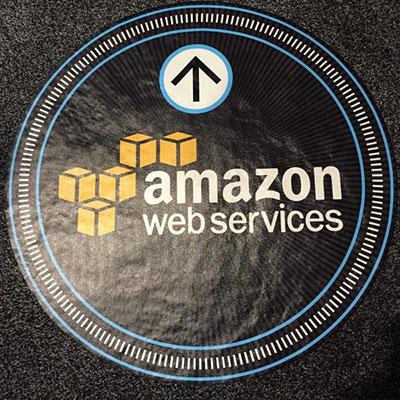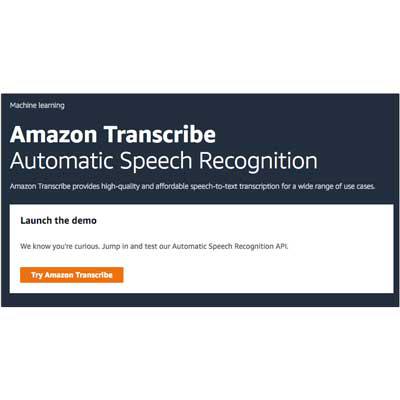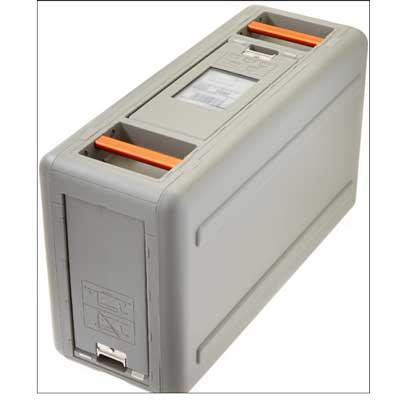10 New Cloud Products Unveiled At AWS Summit

Dealing With Data
Data, AI, and machine learning were all the name of the game during Amazon Web Services' New York Summit this week as the internet giant revealed a series of new services, capabilities, and updates to its various cloud computing services.
Amazon today has tens of thousands of developers – a growing community that's increased about 200 percent year-over-year, according to the Seattle-based company. Every industry is starting to use machine learning. Amazon wants to reduce the time to build and run machine learning (ML) applications for customers, so it's not only bolstering its classic compute offerings, but it is injecting machine learning into many of its existing services to give users the functionality they've been asking for.
Here are ten new offerings that AWS CTO Werner Vogels and Matt Wood, general manager of AI and machine learning for AWS, unveiled this week at the AWS Summit in New York City.

SageMaker Streaming Algorithms
Customers have been asking how to make their own ML algorithms as fast as the algorithms inside SageMaker. Until now, that has been a difficult process to get right and very hard to get good performance, Wood said. It also required getting in the weeds with coding, he added.
As such, AWS is introducing a new feature to SageMaker called SageMaker Streaming algorithms. This capability lets users accelerate their own algorithms and stream large columes of training data from Amazon S3 through their models. It can reduce training time by up to 90 percent, he said. Because everything on AWS is metered, every second counts, he added.
AWS introduced Streaming Algorithms to TensorFlow and will shortly roll it out to other frameworks.

SageMaker Batch Transform
Amazon is well set up for the movement of real-time data today. To help customers process a large amount or very large files of ML data all at once, such as medical imaging data, AWS is now offering SageMaker Batch Transform, a fully-managed offering that lets users process data dumps in a batch, Wood said.
Customers can bring in large volumes of data into their ML model and start doing predictions. Users will also be able to process large files -- 5 gigabit files and up -- much more easily, without having to break it up. Wood said that the win for users is that with Batch Transform, they'll be able to use the same models they are training in SageMaker today for real-time predictions and run the same models for batch predictions.

Amazon Transcribe With Channel Synthesis
Amazon Transcribe, the company's automatic speech recognition service that lets developers add a speech-to-text capability to applications, is being bolstered by a new AI feature called channel synthesis, Wood unveiled.
Channel synthesis will bring fully automated, multi-channel audio transcription to the cloud. The feature will be especially useful for call centers, Wood said. The service splits a transaction into individual channels, such as a customer call on one end and a call center agent on the other, and transcribes the two separately, regardless of the channel -- call or chat, for example -- that each speaker uses. From there, the transcription can be merged so call centers have a single transcription of the multi-channel customer call recordings.

Syntax Identification
Wood revealed that 12 new languages were being added to Amazon Translate, and in addition, Amazon wants to help customers look beyond the language and it's using AI to get there.
The latest tool, AWS syntax identification, lets customers look inside sentences, such as customer reviews, and classify and analyze those words. The technology lets customers perform fine-grained text analytics to identify nouns, adjectives, and even sentiment of a group of reviews, or even a single review.

Amazon EC2 R5 Instances
Not to be overlooked, Vogels revealed several changes to its bread-and-butter cloud computing service during the summit. He pre-announced the next-generation memory optimized EC2 R5 instances, which run at up to 3.1 GHz and feature up to 50 percent more CPU power and up to 60 percent more memory than their predecessor, R4 instances.
With R5 instances, users can take advantage of more processing power, Vogels said.

S3 Request Performance Increase
Amazon has been "restlessly" working to increase the performance of its S3 cloud computing service, especially in the case of large file jobs, Vogels said.
Thanks to the performance boost, S3 now supports up to 3,500 requests per second to add data and 5,500 requests per second, which the company said can save significant processing time for no additional charge. Each S3 prefix can support these new request rates, and customers building new applications on S3 today won't have to make any application customizations to achieve this level of performance.

Amazon EC2 On Snowball Edge
Vogels revealed that Amazon's EC2 compute instances, which are virtual servers in Amazon’s Elastic Compute Cloud service, are now available to run on its Snowball Edge device. The hybrid appliance itself offers a 1.8-gigahertz Intel Xeon processor and 100 terabytes of local storage in a portable device that can be physically transported.
Amazon designed the Snowball appliance line to move data. Snowball devices can be shipped back to AWS for storage, aggregation, and analysis.

Z1d Instances
For applications with very high licensing costs for CPU, Vogels pre-announced a brand-new instance type, the Z1d. This new instance gives developers access to the quickest processer available in the public cloud, with custom Xeon processors that can run at up to 4.0 GHz, he said.
The goal of Z1d instances is to give users high, sustained CPU speeds, and are well-suited for electronic design automation workloads and relational database workloads with typically high licensing costs. Both the R5 and Z1d instances will be available in the coming weeks, Vogels said.

Bring Your Own IP Addresses
Vogels said that many customers have been making requests around their IP addresses, and the fact that moving to cloud often results in a brand-new IP address which could impact the reputation of a business.
To prevent this, Amazon Virtual Private Cloud (VPC) now will allow customers to bring their own publicly-routable IP addresses with AWS resources such as EC2 instances, Network Load Balancers, and NAT Gateways. After bringing an IP to AWS, Amazon will advertise the client's public IP addresses on the Internet. Further, customers will continue to have access to Amazon IP addresses and can choose to use their own addresses, Amazon’s IP addresses, or both.
Bring Your Own IP is currently available in Oregon.

AWS Fargate For EKS
AWS Fargate is an existing technology for Amazon Elastic Container Service (ECS) that lets users run containers without having to provision, configure, and scale and manage clusters of virtual machines to run containers. Customers of the service also won't have to choose server types, decide when to scale their clusters, or optimize cluster packing.
Vogels announced availability of AWS Fargate for EKS, its managed Kubernetes service, during the summit.